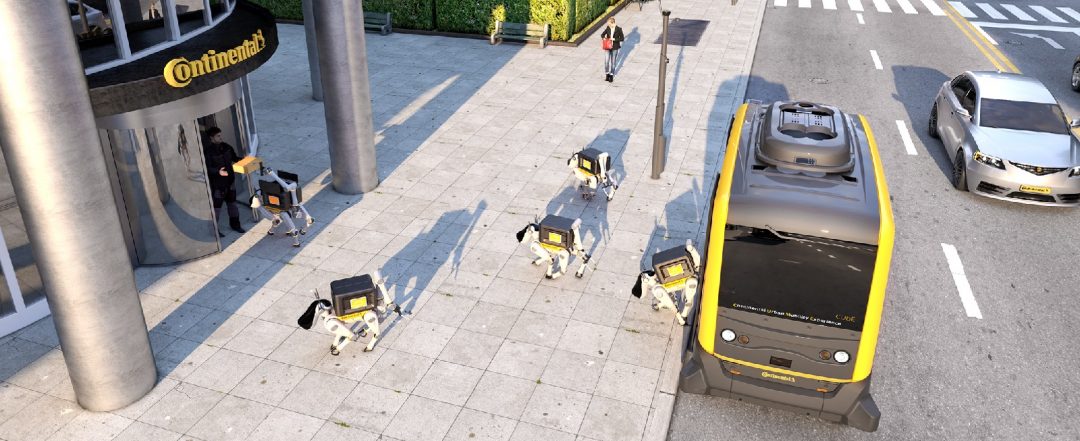Continental’s autonomous electrified development platform, is generally considered as a solution for urban “first or last mile” mobility. This type of vehicle—often referred to as a robo-taxi or pod—could be a part of a future mobility value chain. The purpose of these vehicles will be extended to goods delivery to further utilize the available transport capacity and reduce idle times. Market estimations show that the need to transport goods will even outpace the strongly growing need for people transport in densely populated areas. With expertise in scalable technologies and solutions like sensors, environment perception and modelling, localization, positioning, situation analysis, decision making and mechatronic actuators, Continental wants to play a role in this market.
“With the help of robot delivery, Continental’s vision for seamless mobility can extend right to your doorstep. Our vision of cascaded robot delivery leverages a driverless vehicle to carry delivery robots, creating an efficient transport team,” said Ralph Lauxmann, Head of Systems & Technology, Chassis & Safety division. “Both are electrified, both are autonomous and, in principle, both can be based on the same scalable technology portfolio. These synergies create an exciting potential for holistic delivery concepts using similar solutions for different platforms. Beyond this technology foundation, it’s reasonable to expect a whole value chain to develop in this area.”
Goods and parcel delivery to residential areas is a growing and a dynamic market, driven by e-commerce sales that are increasing every year. With the growth of this segment, delivery cost per hour is gaining importance. This positions last mile and delivery services as a differentiator. Automated goods delivery is forecasted to provide an answer for up to 80% of all business-to-consumer deliveries, according to the company.
With existing delivery robots serving as a development platform, Continental is aiming to transfer and scale automotive technology to meet robot manufacturers’ requirements. “The challenges to a delivery robot parallel what we already solve for in automated vehicles,” said Jeremy McClain, Director of Systems & Technology, Continental North America. With the ever-increasing popularity of online shopping and the growth of megacities, unique solutions for package delivery will be needed. Driverless vehicles combined with delivery robots could be the appropriate answer.
Driverless vehicles are considered as very important element in the Smart Cities of the future. Many experts attribute them a key role of future mobility concepts to solve the challenges of the urbanization. A driverless vehicle can be in use almost 24/7. Innovative city planners see driverless vehicles as a valuable addition to public mass transport by eliminating the need for a privately owned car to get to the nearest point of access to other means of transport.
“There will be peaks in demand for driverless vehicles during the day. To make use of driverless vehicles outside those peak ‘rush’ hours is where robot-delivery comes in,” said McClain. “We see great potential in our automotive technology to support robotics companies in developing autonomous delivery robots as an additional use case for driverless vehicles.”

















